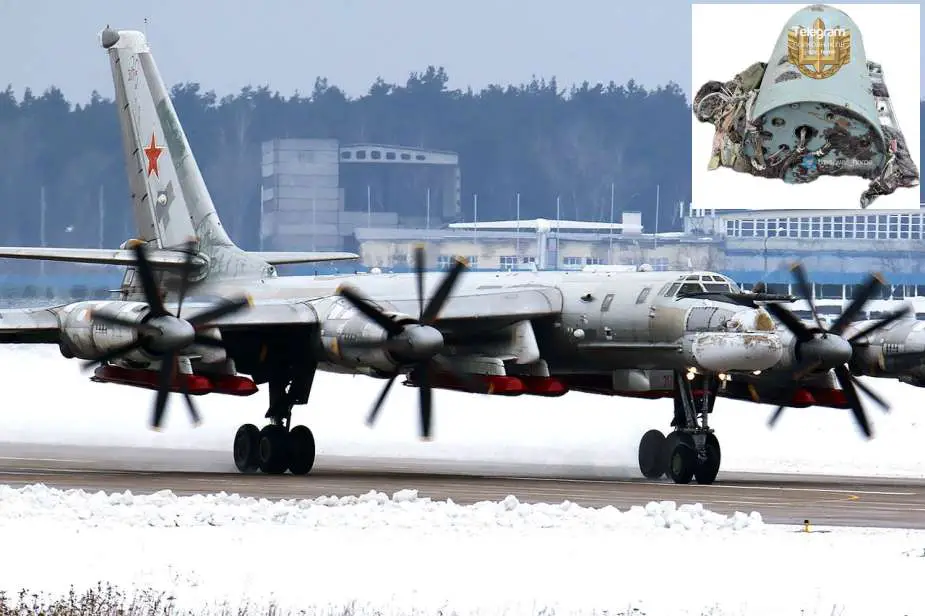- Army
- Conflicts in the world
- Israel - Iran conflict 2025
- Pakistan - India Conflict 2025
- Russia Ukraine War 2022
- Libya conflict day by day
- HAMAS - Israel War 2023
- Operation Serval in Mali French Army
- Sangaris operation Central African Republic
- Sangaris opération militaire République Centreafrique
- Ukraine - Russia conflict
- Syria conflict news
- Defence & Security Industry Technology
- Armies in the world
- Analysis Defense and Security Industry
- Conflicts in the world
- Navy
- Air
Russian Air Force Deploys New Kh-101 Cruise Missile with 800 kg Warhead To Strike Ukraine
According to pictures of debris posted on the War-Home Telegram account, the Russian Air Force has launched the use of an upgraded version of the Kh-101 cruise missile against targets within Ukraine. This modernized missile variant is distinguished by the addition of a dual warhead system, substantially increasing its lethal power.
Follow Army Recognition on Google News at this link

Kh-101 cruise missiles are carried by the Russia Air Force Tu-95M bomber. Debris found in Ukraine indicates that the Kh-101 missile is now equipped with a new double warhead weighing 800 kg. (Picture source Wikimedia)
The advanced Kh-101 cruise missile now carries a combined payload of approximately 800 kg, a significant enhancement from the original 450 kg, thanks to an additional warhead module. This novel warhead is designed to spread cubic steel fragments, aiming to augment the missile's effectiveness in combat. Insights indicate that the incorporation of the second warhead was facilitated by diminishing the size of the missile's fuel tank. Although this modification likely affects its range, the adjustment appears to have minimal impact on the missile’s operational capacity within Ukrainian borders.
The Kh-101 is a strategic, air-launched cruise missile developed by Russia, renowned for its extensive range and precision. Designed to strike high-value targets deep inside enemy lines, it employs a sophisticated guidance system that combines inertial navigation, terrain contour matching, and satellite guidance. The original version of the missile is capable of covering distances up to 5,500 km, enabling it to reach almost any location within Europe, as well as parts of Asia and the Middle East, from Russian territory.
A pivotal characteristic of the Kh-101 is its reduced radar cross-section, which contributes to its ability to evade detection and interception, underscoring the technological evolution in contemporary warfare tactics.
Revelations about the modified Kh-101's use were reported in January 2024 during a visit by Russian Defence Minister Sergei Shoigu to the MKB Raduga plant, the manufacturing site of these missiles. The dual-warhead feature was subsequently confirmed when the Ukrainian Defense Forces intercepted such a missile during a nighttime operation. This event exposed the missile's adapted specifications, including its additional warhead loaded with pre-formed cubic steel fragments.
Despite predictions that the reduced fuel tank would decrease the missile's flight range, it continues to pose a substantial threat. Analysis suggests that, even with a potential reduction in maximum range from 5,500 km to around 2,250 km, the missile maintains ample capability to hit and maneuver over Ukrainian targets. This capability was evidenced in recent assaults where the missile, launched from Saratov Oblast in Russia, demonstrated its reach and versatility across the intended distances within Ukraine.
The deployment of this upgraded Kh-101 cruise missile by the Russian Air Force marks a critical moment in the ongoing conflict, illustrating not only the advancement of military technology but also the severe challenges faced by Ukrainian defense efforts. This development also underscores the resilience of the Russian defense industry in continuing to innovate and produce new types of weaponry, despite facing stringent international sanctions. The introduction of such technologically sophisticated armaments into the theater of war reflects a determined effort to maintain a strategic advantage, highlighting the complex dynamics of modern warfare where technological prowess can significantly influence the course of conflicts.
News Russia Ukraine War


























